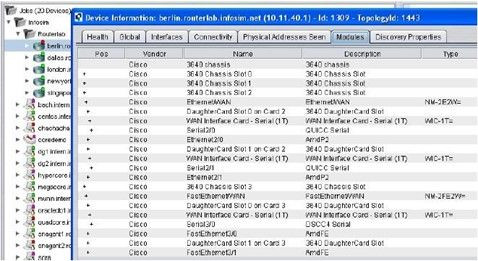-
Call Us:1.800.561.4019
Newsletter
For a Free Quote...
Latest Blog Posts
Blog Categories
Telnet Networks News
Top 5 Network Resolutions for 2015
With the approach of the New Year, water cooler conversation has turned to resolutions. Rather than talk about losing weight by abstaining from Grandma’s fruitcake, pass along these useful tips for ultimate network fitness in 2015.
1) Resolve to play better with the other IT teams. Share your packets
Given that every IT initiative runs on the network, it shouldn’t be a huge surprise that the value of a packet’s payload is not limited to the network team. Virtually every IT team from application developers to DevOps could fine-tune their operations with access to packet analysis.
In the past, the challenge was sharing this data with teams using different monitoring tools. With more tools utilizing web reports and APIs, it is now easier to share and integrate information between multiple tools and teams. Sharing is caring.
How to Prepare: Raise your profile in IT by raising the profile of the packet. As you’re storing packets, identify other teams that might have a need for packet intelligence. That application developer in the break room might be interested to know the network impact and chattiness of an internal app they're coding.
Performance monitoring solutions like the Observer Platform can provide access to packets and simplify the sharing of analysis. Customizing web dashboards and integrating tools via the new RESTful API allows non-network IT teams to consume analysis derived from packets in ways that are meaningful to them.
2) Resolve to prepare for 40 Gb - Coming to a datacenter near you!
A perfect storm is taking place to drive 40 Gb adoption into the datacenter mainstream in 2015. Lower per-port pricing coupled with Cisco’s BiDirectional (BiDi) Optical Technology allows organizations to run 40 Gb traffic on existing 10 Gb cable infrastructure. This will make a compelling case for organizations looking to satisfy rapidly growing bandwidth demands. Most adoption conversations at this point are concerned with implementing 40 Gb links to connect between datacenters or critical core links.
How to Prepare: As you upgrade your network, be sure your monitoring tools can keep pace. When increasing network capacities, verify your monitoring infrastructure can interface with high-speed network connections. Another consideration to lighten the load on existing monitoring infrastructure would be to assess network packet brokers or aggregation switches to load balance large amounts of traffic across multiple monitoring appliances.
3) Resolve to get serious about Software Defined Networking
New technologies allowing network programmability are finally maturing to the point of being ready for mainstream enterprises to take under serious consideration. With Cisco and other vendors now actively offering a solution, most organizations will move beyond “researching” and into “planning.” SDN is not ready to do everything in your network, but it can help in a number of important ways to pave the path toward better operational integration and automation for IT services.
How to Prepare: This will require upgrades to network gear, at the very least, and may involve adding some new equipment too. In the case of SDN overlays and Network Functions Virtualization, it will be mostly software, but don’t forget that you need compute hardware to run the software. Further, the management picture is not nearly as fully formed as the enabling technology, and these new components must be folded into both planning and operations monitoring/troubleshooting systems and workflows. In 2015, EMA expects to see management tool vendors move from a “BYO API” approach to more pre-tested, out of the box support for SDN underlays, SDN overlays, and NFV technologies.
From: Jim Frey, VP of Research, Hybrid Cloud & Infrastructure Management, Enterprise Management Associates
4) Resolve to keep an open eye on the inside threat
While 2014 was undoubtedly the year of the external breach as highlighted by Home Depot and Sony Pictures, this next year will likely mark a shift to inside threats. As companies respond by strengthening perimeter defenses, it will be easier for criminals to circumvent these security measures by breaking into a company from the inside.
How to Prepare: Even if you don’t have the word “Security” in your title, the network team is the first line of defense against an inside threat. Question unexpected bursts of traffic or unusual behavior from a single client or internal device. Additionally, when thinking about access privileges, do you have a handle on who can access what assets? Does the network team give unlimited access to any file share? Key questions can minimize your exposure to internal threats.
From: Jeffrey Barbieri , Cyber Intelligence Investigator for Atrion Communications Resources
5) Resolve to effectively manage big performance data for better troubleshooting
Let’s face it, when we’re talking about performance monitoring in 2015, we’re talking about a big data operation--10 Gb pipes running at near line-rate capable of pushing through terabytes of packets in hours. In the dynamic, virtual world where servers and resources can be vMotioned from one physical location to another, and traffic can be captured and analyzed by different appliances, the emerging challenge for engineers isn’t just finding the needle in the haystack, but actually figuring out the location of the haystack.
How to Prepare: In these types of dynamic and distributed environments, it’s critical that your performance monitoring solution can scale. It must present an aggregated view of performance across all your datacenters and intuitively drill to the correct appliance regardless of the server or resource location at the time of the problem. Other functions critical for sifting through big performance data are logical workflows and robust search capabilities for quickly determining the location and scope of the problem, and performing root-cause analysis.
Thanks to Network Instruments for the article.
When you subscribe to the blog, we will send you an e-mail when there are new updates on the site so you wouldn't miss them.





Comments